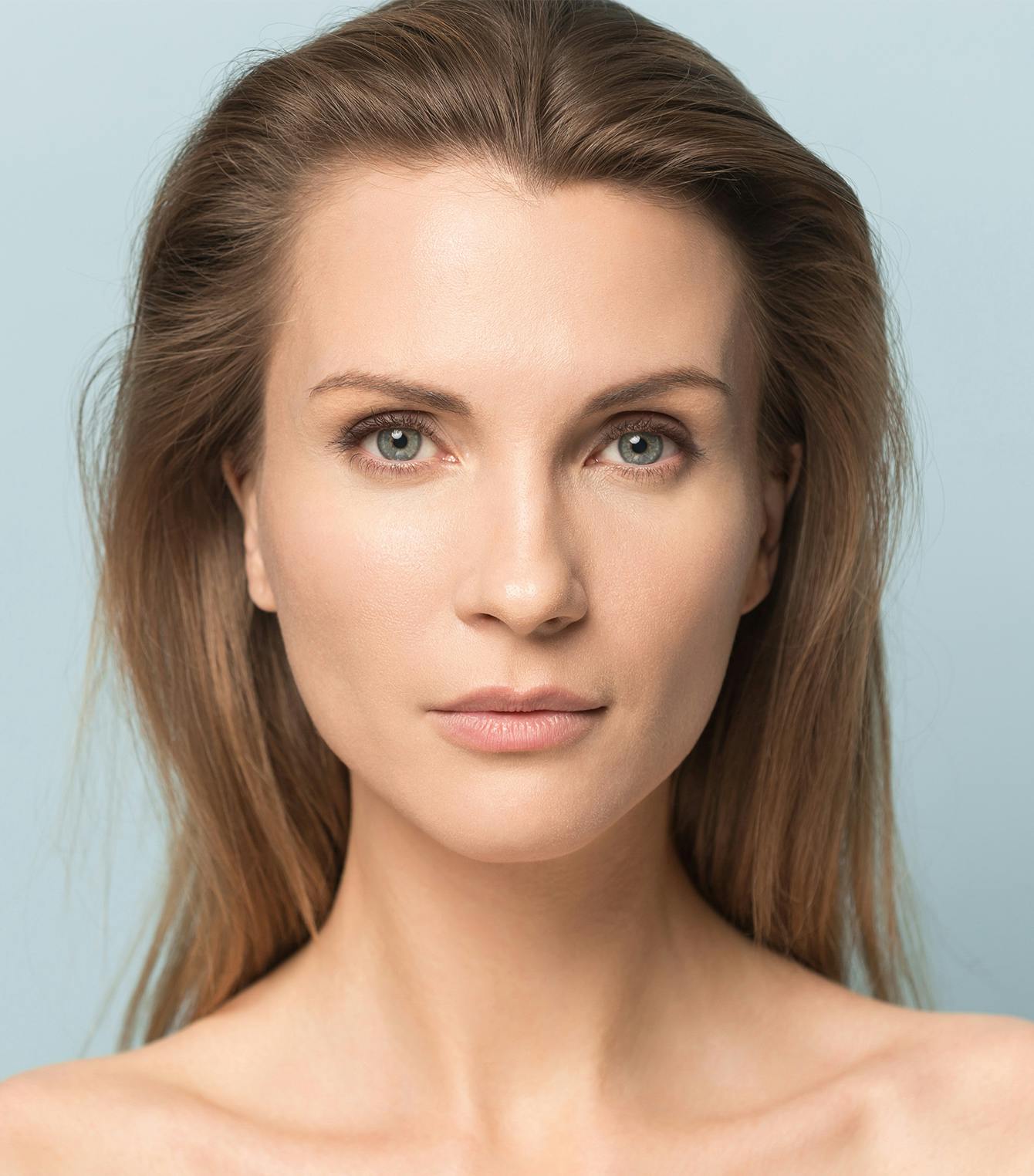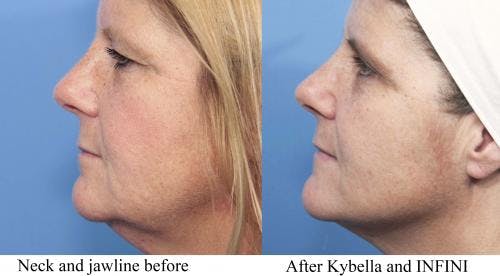Infini is a revolutionary radiofrequency energy device that tightens skin, treats wrinkles, and corrects acne scarring. Infini delivers high intensity radiofrequency energy deep into the dermis to stimulate collagen production for impressive wrinkle reduction.
What makes Infini different than other RF or radio frequency devices?
INFINI uses fractional tissue heating, not bulk heating. The needles are insulated, needle depths are variable, coagulation occurs for maximal collagen stimulation, and the epidermis is safely protected from the heat. This allows for a very safe treatment for all skin types, that is also very effective.
What long term complications have you (Dr. Cappuccino) seen?
With over 500 treatments during the past 2 years, I have seen only one complication, which I have attributed to being overly aggressive with a new technology. This complication was skin atrophy which was subsequently corrected. Since then, no complications have been observed. No skin atrophy, no unintended fat loss, no scarring, and no pigment changes.
How long does a treatment take?
With an experienced provider, a full face treatment takes about 45 minutes, and if the neck is included, add another 20 minutes. Numbing prior to the procedure takes 1 hour.
How long is recovery?
The initial redness subsides very rapidly in the first hour. It takes about 24-36 hours to resolve, as does the swelling. Rarely, patients report extended redness for a few more days.
What are the restrictions after the Infini?
Skincare must be only the prescribed creams. No make up until the morning after and use caution with touching the skin with unclean hands or towels. There are no activity or sun restrictions!
How many treatments are needed?
Good question. It is variable. To get maximum benefit, the general consensus is 3. Some people might be happy with only one, but that is uncommon. Younger patients wanting only preventative treatments can get one yearly. Acne scarring clients should consider at least 3, and might be more satisfied with 5 or 6.
How does Infini affect fillers?
Fillers that are placed below the skin will not be affected as the INFINI micro-needles do not penetrate the skin unless I specifically desire heating of fat below the skin in certain areas. Bellafill is not affected at any depth and is frequently done at the same time as the Infini by Dr. Cappuccino. If a hyaluronic acid filler is placed in the dermis, as is done for the treatment of fine superficial lines, they are at risk of being degraded and INFINI should be done before the filler.
How long should I wait between treatments?
Consecutive treatments can be done as close as 4-5 weeks apart. If this is not possible because of your schedule, don’t worry, the final results are not affected.
How painful is the Infini?
All patients have a topical anesthetic placed 1 hour before the procedure. For some areas of the face/ neck this is adequate, however some areas such as the forehead or around the lips often require more anesthesia for optimal comfort. After the skin is mostly numbed with the topical, Dr. Cappuccino or his assistants administer some extra local anesthesia in the most sensitive areas. Most patients will rate the majority of the procedure a 3 or 4/10.
Can the Infini be used on other parts of the body?
We routinely treat the neck and chest in conjunction with the face treatment. Other areas we have treated are upper arm laxity, knee area, and scars from abdominal surgery. Stretch marks have been treated but results are variable. We have successfully treated hyperhidrosis (excess sweating in the underarm area) with the Infini as well. When appropriate depths and settings are used, the Infini can be used on all areas of the body.
How many passes are performed on each area?
Each area is treated at least with 3 depths unless the skin is very thin and then only 2 depths are done. Some areas are treated at 4 or 5 depths. Typically only one pass per depth is performed however in certain circumstances 2 or more passes may be done at a specific depth.
What patients would you exclude?
Very few patients wouldn’t be candidates. Patients with pacemakers should not be treated. If there is metal in an area of the face, the skin overlying this area can not be treated. Patients on blood thinners can be treated but will get bruising. We try to hold all thinners if it is possible prior to treatment. Aspirin needs 12 days for its action to be completely reversed on the platelets. Smokers have variable and in general less impressive results so I prefer not to treat actively smoking patients. Patients with severely sun damaged skin will theoretically respond less than a person with healthy skin as their skin is already compromised as is its ability to build new collagen.
Why is Infini safe for darker skin patients?
Melanocytes which produce our skin’s pigment, reside in the superficial layers of the skin. The Infini is protective of the epidermis because its needles are insulated. Also, the depth can be adjusted so the heat from the RF stays in the dermis, below the most superficial layer. Other devices are either not insulated, or try to push heat through the skin, potentially damaging the pigment cells.
How does the Infini compare to lasers for treating acne scars?
The Infini is safer than a laser, with less downtime, and no risk to the eyes. As stated above, the darker skinned patients can be treated more safely with the Infini when compared to a laser because a laser will heat the upper layer of skin, the epidermis. Lasers have the risk of pigment changes (darker or lighter). Results from Infini appear to be better than lasers for acne scars. It is postulated the increased depths of the Infini (up to 3.5mm) vs lasers (maximum about 1.8mm) seems to make the difference. Also, elastin is produced (elastosis) in response to an RF treatment, and this is not the case in laser resurfacing.
How long do results last?
This is a difficult question and will be different for each patient. The collagen created will last at least 7 years. However, the amount of collagen is variable, and depends on the overall skin health, patient’s health, smoking habits, age, tanning, sun exposure, and lifestyle. It is usually recommended to have a single “touch up” performed every 12-18 months.






